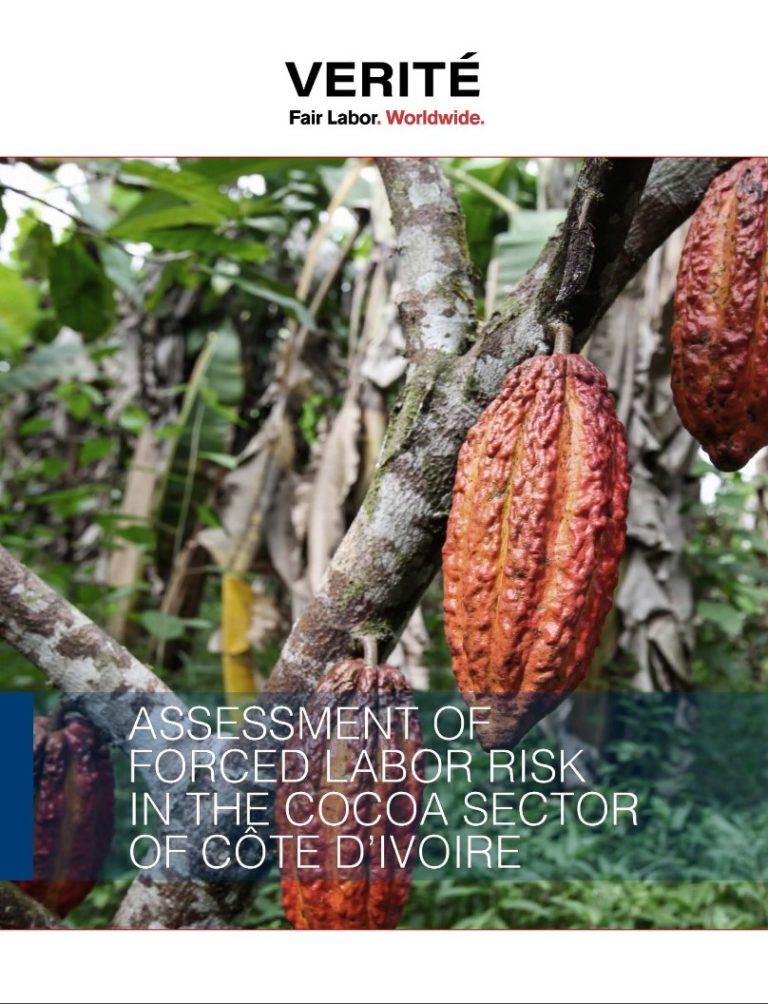A statistically representative study by Tulane University and Walk Free Foundation in 2018 estimated that 0.42 percent of adults working in cocoa experienced forced labor in Côte d’Ivoire (CDI) between 2013 and 2017. The same study found that 0.17 percent of children working in cocoa agriculture in CDI were forced to work by someone other than a parent. While percentages are low relative to the overall population, the very large number of people involved in cocoa production in the country means that victims likely number in the thousands. Given the hidden nature of much human trafficking and forced labor, it is also possible that levels may be significantly higher within isolated pockets in the sector. In late 2016, at the request of the International Cocoa Initiative (ICI) and two of its major private sector members, Verité researchers undertook rapid appraisal research to explore the nature of forced labor risk in the cocoa sector in Côte d’Ivoire. The study did not seek to document the overall level of forced labor in the sector, but instead to identify and qualitatively describe the nature of the specific indicators of forced labor that appear to be most relevant in the Ivoirian context. Verité based the methodology for this research on the definition of forced labor and methodological guidance on forced labor research provided by the International Labor Organization (ILO). Using the ILO’s forced labor indicator framework, the Verité study focused on identifying specific risk factors for forced labor faced by cocoa workers, sharecroppers, and primary producers in Côte d’Ivoire. The study also explored the root causes and contextual factors that contribute to forced labor vulnerability in the sector.

